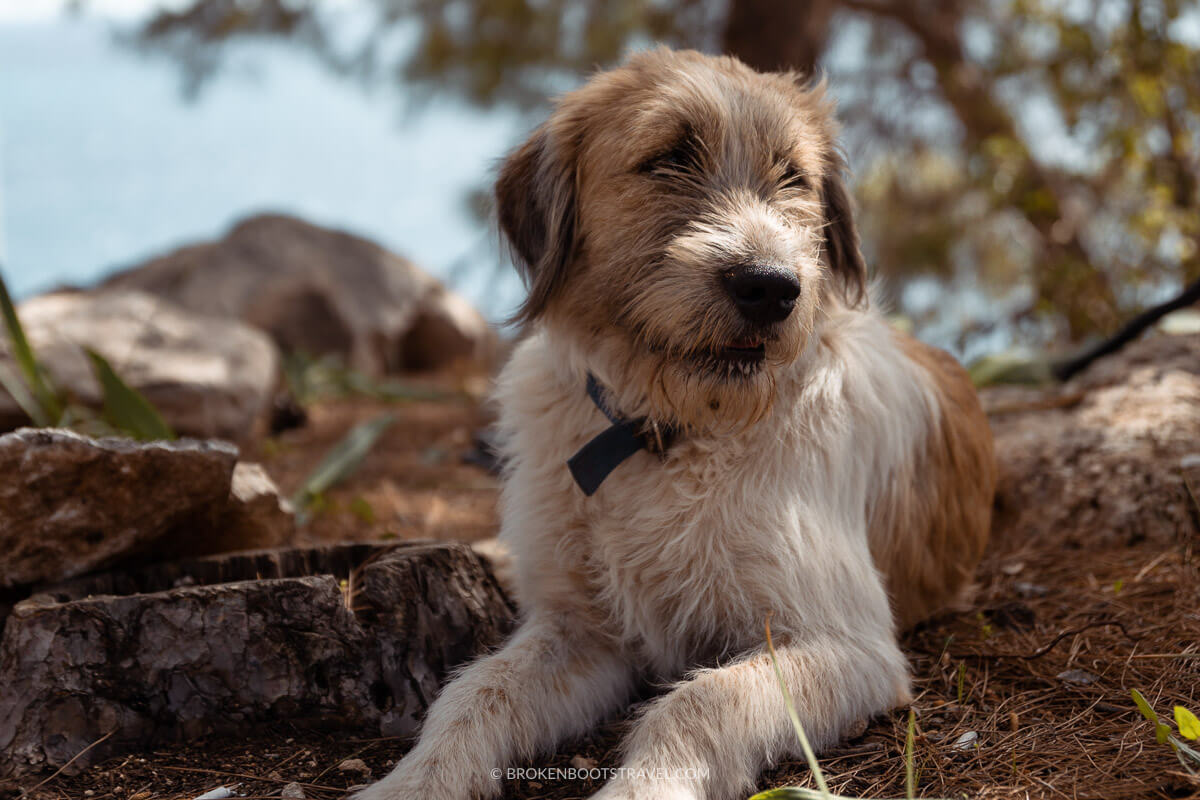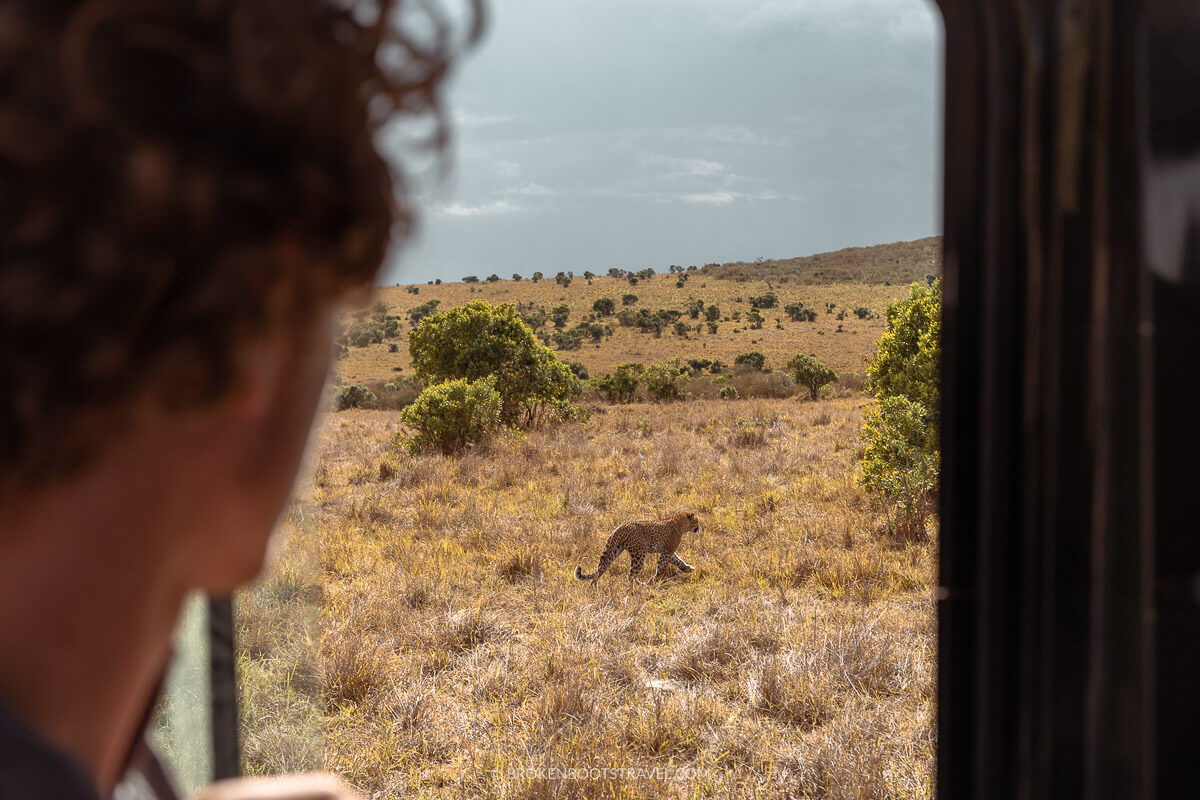We’d certainly seen our fair share of predators in the Kenyan savanna. Leopards had lurked through the tall grass, silently hunting our Jeep like we were prey among the plains. Lions, their bellies freshly full of buffalo, had eyed us from the bushes, as if deciding if they still had room for more. And yet, after nearly two days of exploring the Maasai Mara, little did we know the most dangerous predator was yet to come.
We had stopped for lunch beneath a long-trunked acacia. Around us the savanna stretched for miles – the landscape spotted with zebras and antelope, the sky brilliant and blue.
I was eagerly anticipating my meal. We’d risen long before the sun and were deep in the mara before the first rays of light broke on the horizon. Now the sun hung high above our heads, the warmth inviting us to stop and rest and enjoy. I was certainly ready to accept the invitation.
Nearby, our guide Richard spread a checkered blanket on the ground. He laid his phone in a corner to secure it from the wind, moving back to the Jeep to begin unpacking lunch. The rest of us clamored out of the car, eager to stretch our legs and soak up the sunshine. The savanna echoed with laughter and conversation, mingling with the whistle of wind across the plains.

I stood beneath the acacia with a Swiss woman named Petra who I’d befriended the evening before. A few of us had stayed up late the prior evening, sharing stories over cups of milky chai and pushing off the inevitable cold showers that awaited us back at our tents. She’d been in Kenya two months she told us – but this was her first time outside the small mountain town where she lived and worked.
We certainly weren’t in the mountains now. Looking out across the plains it felt like I could see forever, an expanse of green and gold until the land met the sky in a burst of blue. From where we stood, predators could probably see us for miles – but we could also see them. Or so we thought.
I set my backpack on the ground, moving to help Richard unload packed lunches from the jeep. Behind me, I heard Petra speak.
“Do you hear that?” She tilted her head, one ear to the sky, the other to the ground. In the midst of her movement her eyes caught sight of my backpack, horror registering on her face.
“Ginna,” she stammered, her eyes fixated on my bag but her feet already stumbling backwards over the tall grass. “Ginna, look.”
I turned. My bag, resting among the roots of the acacia, was covered in a near-impermeable layer of hornets, their melodic hums growing louder by the second. The cloud of angry insects grew, and before I could react one buzzed angrily by my ear, burying himself in my hair.


Steps away, Richard had taken notice of the commotion. He sprung into action, abandoning the picnic blanket on the ground as he began to alert the other members of our group. “Run!” he picked up speed, sprinting across the savanna. “Run, this way, now!”
By now, everyone had noticed the disturbance. The hornets had spread, pouring through the open windows of the Jeep and surrounding our small group, fully exposed in the vastness of the mara. We began to run – senseless of direction, our only thoughts escaping the ringing hums and protecting our exposed skin.
The tall grass slapped at my legs, my hair a nest of red hot hornets working as quickly as they could to remind me who really ruled this savanna. I uselessly brushed my fingers through my hair, my efforts only succeeding in further entangling the insects in my ponytail. For a moment, the world became nothing more than the burn of heavy breathing, the weight of pounding footsteps, and the roar of buzzing deafening me to the outside.
Richard was far in the distance, waving his shuka like a white flag. I continued running, only slowing when the ringing subsided in my ears. All around, others in our group began to surrender, coming to stops before falling to their knees or examining their stings. Only Mary, an older woman who had lovingly declared herself my “Kenyan mother,” continued further into the savanna, with the speed and endurance of a young athlete.
Across the mara, our Jeep and lunch sat abandoned beneath the acacia, a tiny speck in a vastness of grassland. Nearly a kilometer away we gathered in safety, catching our breath and comparing our injuries. I was one of the lucky ones; a single sting marked my right palm, whereas Petra brandished an angry red line of bites up her leg.
“What do we do now?” No one had an answer. Looking from one another aimlessly, the silence was finally broken by a small chuckle, which grew as we all began to realize the ridiculousness of the situation we’d found ourselves in. We were on the run from animals no bigger than my fingernail, momentarily forgetting about the leopards and lions that also roamed these lands.
Abandoned in the savanna, we began to plot our escape. How long did hornets usually swarm for? No one knew. How could we rescue our lunch? Probably best to call that one a loss. Were there lions nearby? Let’s hope not.
It was Richard who finally made the treacherous journey. We all removed any clothing we possibly could, dressing him in layers of sweaters and scarves. He clutched the keys to the Jeep in a sock-covered hand, staring at the invisible wall of insects like a soldier prepping for battle. Finally, with a deep breath, he began the journey back across the savanna.

His stride was slow at first, as if carefully placing his feet to mislead an enemy. His gait quickly increased in speed, and before long he was running towards the acacia at an all-out sprint, his hands waving wildly to deflect the flying predators. He dove through the door of the car, momentarily fumbling with the keys before sparking the ignition and hitting the gas. The Jeep took off across the savanna, roaring like a Formula One car and catching air on a divet in the ground. It made a few donuts, clearing the final hornets from the interior, before Richard quickly rolled up the windows and turned in our direction. Before long we were all clamoring back into the Jeep, battered, bitten, and bruised but glad to once again be safely protected within its walls. My backpack had been rescued, but our blanket was not so lucky. We left it beneath the acacia tree, a sacrifice to the hornets in exchange for their pardon.
As we sped back across the savanna we passed around the remaining meals, salvaged from the wreckage of the war zone. We watched the mara speed by as we split sandwiches and traded apples, silence filling the car as we hungrily ate our lunch.
Only minutes later, the Jeep screeched to a stop.
“Hippos!” Richard pointed through the windshield. Our car was perched just feet away from a shallow ravine, the bottom covered in a river of water and spotted with the massive bodies of a family of hippos. One picked his head up from the muddy bath and let out a yawn, revealing teeth the size of kitchen knives.
“Hippos are one of the only animals that could kill a lion,” Richard noted as the yawning hippo submerged once again beneath the marsh. “One could argue they’re the most dangerous animal in the mara.”
He absentmindedly scratched at a bite on his arm before pausing, noting the irony. Chuckling, he turned off the engine of the Jeep.
“This seems like a good place to stop for lunch,” he stated. “After all, we’ve seen worse.”

LOOKING FOR MORE STORIES?
Love stories? Check out my latest stories below, or click here to read all stories from Broken Boots Travel.
Love stories? Subscribe to my newsletter to get my latest updates delivered straight to your inbox every month. One email a month + no spam? Sign me up!
Virginia Taylor (Ginna) is a travel writer and photographer exploring the world until her boots wear through. She’s currently on a mission to explore all 32 departments of Colombia, though she formerly called the Middle East home. Want to know more? Visit the About Page.


